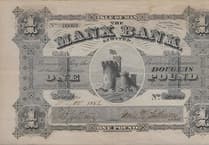Do you have a nervous dog?
Do you recognise what nervousness looks like, because not all nervous dogs are as scared-looking as the Romanian rescue dog currently trending on Twitter – poor Sophie hides behind a sofa most of the time, and when she does emerge her tail is firmly between her legs and she visibly cowers.
Nervousness, as with humans, manifests itself in many ways: some dogs bark, some lunge, some growl, some bite … and some simply look as though they have been beaten by their (very loving) owners.
The triggers can vary too: house visitors, other dogs in the park, cars driving past … the list is endless.
So how can you tell if your dog is overly anxious about something?
Fight or flight are well known responses to fear, but there are two other reactions that are less well known – namely freeze and fawn.
Some dogs have a genetic predisposition to one response or the other, whilst some make a choice based on what they have experienced in life.
Freezing gives a dog time to think about their next move; whilst fawning (rolling over and showing their belly, lifting a paw, or ‘grinning’ with wide open eyes) is a learned behaviour that can help to diffuse a stressful situation.
So how can you help a nervous dog to deal with their anxieties?
It’s a slow process, and takes time.
There are no quick fixes, and aversion therapy – ie repeatedly exposing a dog to what it fears – is a heavy-handed and cruel approach. Another term for this approach is ‘flooding’, and it is now a largely discredited approach to dog training.
A far better approach is to introduce your dog to a very diluted version of what they fear, or what makes them anxious. Get house visitors to help you – have them already seated by the time you allow your dog to enter the room they’re in, and ask them to ignore the dog.
Or if other dogs or cars are a problem, take your dog to a location where you can observe them from a long distance, then gradually reduce that distance.
And if a certain sound is scary, record that sound on your mobile phone and play it back to your dog with the volume turned down; and, again very gradually, increase the volume over time.
You need to work towards a ‘no reaction’ response, which you should then reward with praise and/or a treat.
Behaviours that feel rewarding to a dog increase, but you can only progress at your dog’s pace.
A trip to the vets is a common source of anxiety for dogs – quite understandable when such visits usually result in being prodded by a needle. Why not make time every few weeks to simply visit your vet’s practice and say ‘hello’ to the reception team, and then calmly walk away?
We have a nervous border collie in our rescue kennels at the moment.
She’s called Nala and she simply hasn’t been well socialised during her six years of life (although she has lived with a cat).
She’s scared of lots of things and she can become ‘over-stacked’ – a canine behaviour expression for overwhelmed.
She is unsettled around people she doesn’t know, and she is selective about whether she likes other dogs. She also displays that familiar collie trait of chasing cars, and she lunges at passing cyclists.
This is due to her innate herding instinct which involves the management of movement.
She is eminently trainable, and simply needs a new owner to have the time and energy to invest in her.
She definitely would not suit an owner who spends long periods of time out of the house, and so someone who works from home or who is retired would be ideal.
If you think this could be you, please call the kennels team on 851672, option one, and leave a message if there’s no one immediately available.




